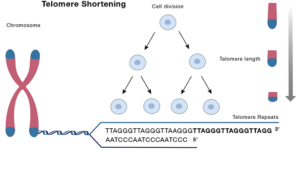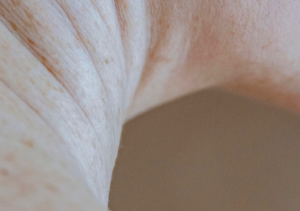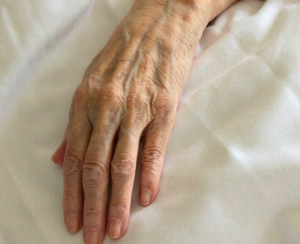Introduction
For the sword outwears its sheath,. And the soul wears out the breast,. And the heart must pause to breathe,. And love itself have rest (Lord Byron)
Lord Byron, the famous English poet, actually wrote this poem as he tried to change his pissant lifestyle and do something more ‘Victorian’ than shagging and drinking all night. Personally, I can’t see why. Nonetheless, it sits well with the notion that we all age, we all tire out and live different lives.
For many, this brings on predictable changes. Bone reabsorbs, especially over our face where it gives us hollow and sagging midcheeks. The fat that gives our face plumpness and buoyancy shrinks, with similarly thinning skin sagging over it. Our hair thins, greys and stops growing. We lose height in our vertebrae, our muscles shrink and our belly expands. At some stage, things really fuck up and our organs fail; bringing forward aches and moans and groans all the way to debilitating age related illnesses.
It’s all so cheerful isn’t it?
However, not everybody ages poorly. I once had a 98 year old patient see me whose only complaint was ‘occasional erectile dysfunction’. Tom Cruise is doing well for his early 50s (not exactly Mission Impossible) and of course, we have an entire language describing very active and attractive older people. Who can forget the achievements of the Silver Fox or the Cougar?
I personally look forward to going a debonair shade of grey to make up for my 20s spent in medical school. But how can I make sure I end up Richard Gere and not Goldie Horne?
So, what is ageing?
Ageing is defined as the loss of cell mass. Cells reach a certain point in time where they stop replenishing and reproducing. Consequently, there are less of them over time. This leads to the changes of age.
This occurs at the DNA level in each cell. It has a lot to do with how DNA shortens each time a cell reproduces. This is not a static process; there is more shortening when there is more damage in a cell; conversely, there is less shortening if cells are looked after.
Our lifestyle and health influence how much DNA our cells take with them into their new life. If we were to sit under a bridge, chain smoking and drinking alcohol, our cells would be under constant attack from those chemicals. Good nutrition is essential for cells to have the supplies needed to detox.
All that toxicity overloads the cell in its day to day function of cleaning out toxins and repairing broken DNA. It hardly has the energy to bring all the DNA with it to the next life. And why should it? Surely a species under attack like that should not hang around long enough to reproduce.
This is the essence of ageing. Those pieces of DNA that are lost are called telomeres. They get shorter the more damage a cell has and the more it reproduces; both incidentally occur over time. Once they are too short, a cell will die forever. Cell mass is lost and thus, we age.
At some end point, as Byron might put it “The telomere outwears its helix and the DNA wears out the nucleus. And the telomeres must pause to breath; and the cells itself have rest.”
What are Telomeres?
Telomeres sit at the end of chromosomes, which is where our DNA is stored. Telomeres are made of DNA but they do not code for anything. They protect the chromosome and thus DNA during cell replication. Over time, due to multiple cell divisions, the telomere gradually shortens. Once the telomere is too short, the cell will not divide. Instead it will become dormant or senescent, or die.

Telomere Shortening and Aging
The shortening of Telomeres is thought to be involved in the ageing of the body and its cells. Ageing is whereby cells that would normally reproduce, are unable to divide and replenish themselves. This results in lower hormones, thinner bones, less elastin and collagen in skin, inadequate repair of tissues (high rate of cancer, skin blemishes) and diseases associated with ageing. This is due to stem cells no longer reproducing or functioning well; so called Tissue-Failure diseases.
What causes Telomeres to shorten?
Telomeres shorten naturally over time, however many states are thought to hasten this. Telomeres shorten more quickly if there is excessive DNA or cell damage, such as oxidative stress, toxin buildup, UV etc. or diminished ability of the cell to clean it up. The mitochondria is a small organelle in a cell that produces energy and also helps clean up the cell. If it is not functioning optimally, telomere shortening occurs faster.
The factors broadly include:
- Chronic inflammation
- Oxidative Damage
- Stress that activates adrenalin and the hormone cortisol
- Infections
- High insulin
- Gut issues
- Hormonal imbalances
- Toxic chemical exposure
- Obesity
- Poor quality sleep
Poor mitochondrial function
How do I prevent the shortening of Telomeres?
Telomeric shortening is but one mechanism of ageing. It is important to treat the body as a whole. Therapies to stop telomeric shortening are aimed at preventing ageing and prolonging the lifespan, whilst reducing diseases.
Measures include:
- Optimise nutrition; test and treat any deficiencies
- Help your cell and mitochondria repair DNA damage: optimise NAD+ and methylation
- Lower insulin
- Minimise toxicity in the environment
- Detox regularly
- Lower inflammation: diet, lifestyle and antioxidants (E.g Glutathione or Vit C infusions)
- Practice fasting by a reduced meal window
- Balance hormones
- Good quality sleep
References
Lulkiewicz M, Bajsert J, Kopczynski P, Barczak W, Rubis B. Telomere length: how the length makes a difference. Mol Biol Rep. 2020;47(9):7181-7188.
doi:10.1007/s11033-020-05551-y
Roake CM, Artandi SE. Regulation of human telomerase in homeostasis and disease. Nat Rev Mol Cell Biol. 2020;21(7):384-397. doi:10.1038/s41580-020-0234-z
Shammas MA. Telomeres, lifestyle, cancer, and aging. Curr Opin Clin Nutr Metab Care. 2011;14(1):28-34. doi:10.1097/MCO.0b013e32834121b1
Srinivas N, Rachakonda S, Kumar R. Telomeres and Telomere Length: A General Overview. Cancers (Basel). 2020;12(3):558. Published 2020 Feb 28. doi:10.3390/cancers12030558




